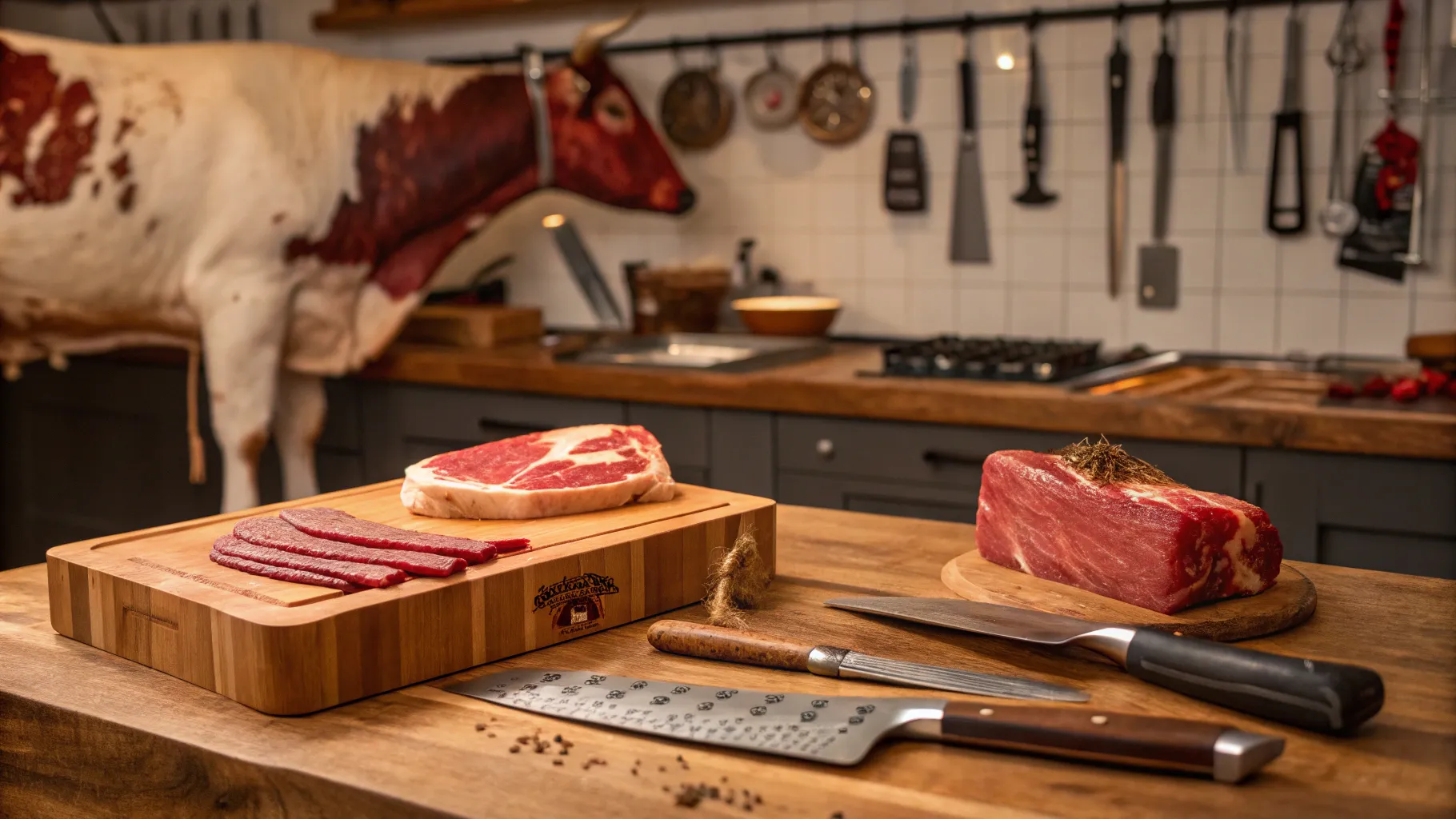
Breaking down a whole cow into the cuts you see at your local butcher shop might seem daunting, but with the right knowledge and technique, it becomes an art form. Jason Yang, a butcher at Fleischer's Craft Butchery, takes us through the step-by-step process of breaking down half a steer, revealing the secrets behind each cut, their best uses, and tips for cooking them to perfection. Whether you're a cooking enthusiast, a recipe developer, or just curious about butchery, this guide will deepen your understanding and appreciation of beef cuts, inspired by Bon Appétit's expert approach to cooking, recipes, and flavor.
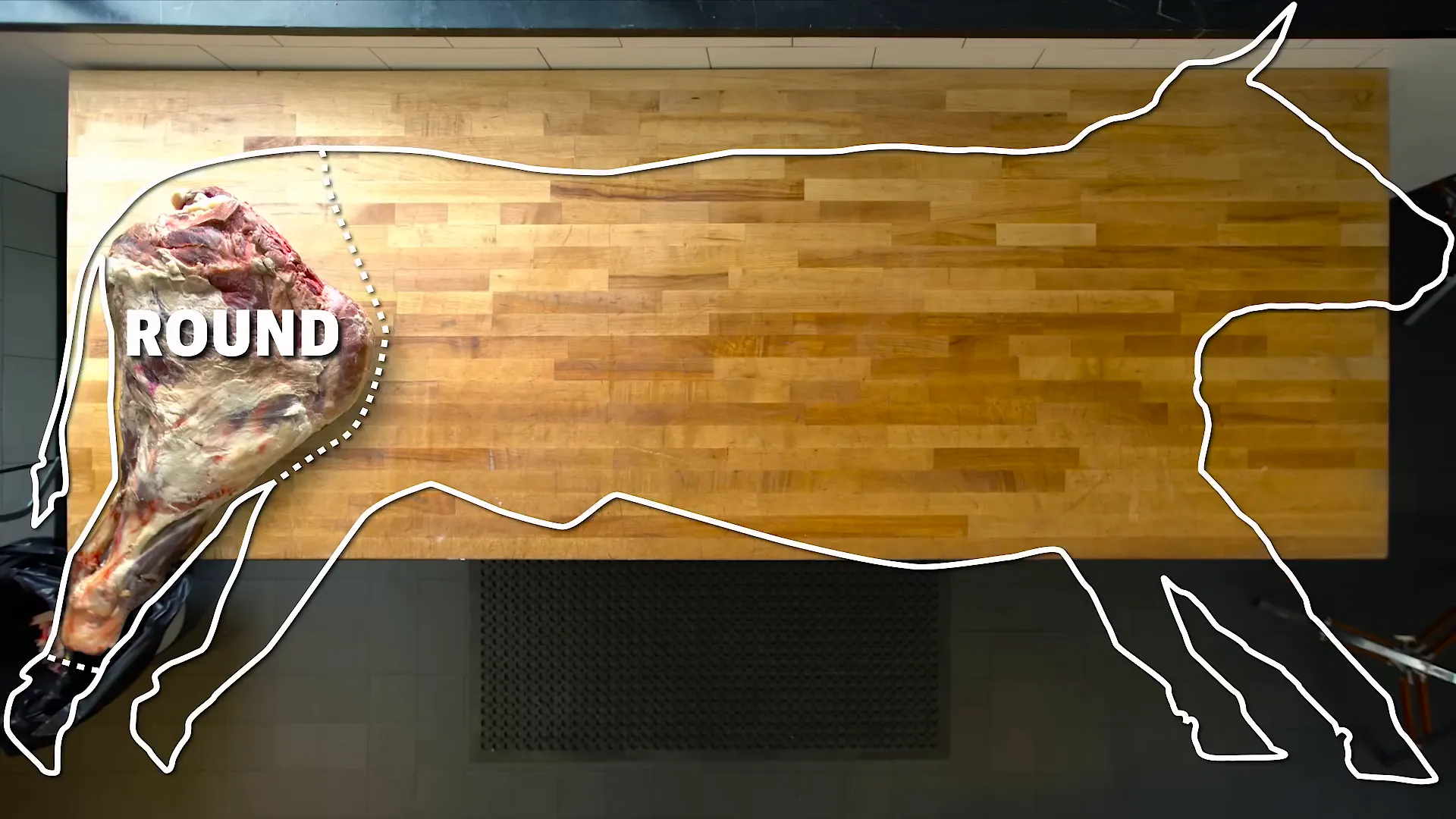
Starting with the Round: The Rear Leg Cuts
The round, located at the rear leg of the steer, yields some of the best roasts you'll find. Jason begins by removing the oyster steak, a small but incredibly tender and juicy cut that sits atop the H bone. This cut is a craft butcher's secret and rarely found outside specialty shops.
Removing the H bone requires severing strong tendons holding the femur in place. This step is crucial to access other muscles and to remove the shank, a tough but flavorful bundle perfect for braising. Braised shank dishes can become some of the most delicious meals when cooked properly, full of unctuous richness.

Once the shank is removed, Jason unbundles four key muscles in the round: the top round, knuckle, eye round, and bottom round. These muscles are separated by natural seams, making it satisfying to peel them apart. The femur bone, the longest marrow bone in the steer, is saved for marrow dishes or stock.
He explains how to cut marrow bones into rounds or canoe them to roast and enjoy the rich marrow inside—a fantastic winter meal.
The sirloin tip, knuckle, and gooseneck (a combination of eye round, bottom round, and heel muscles) are next. The heel can be braised or sliced thinly for a steak called the merlot, which offers a tight grain and great flavor when cooked medium rare.
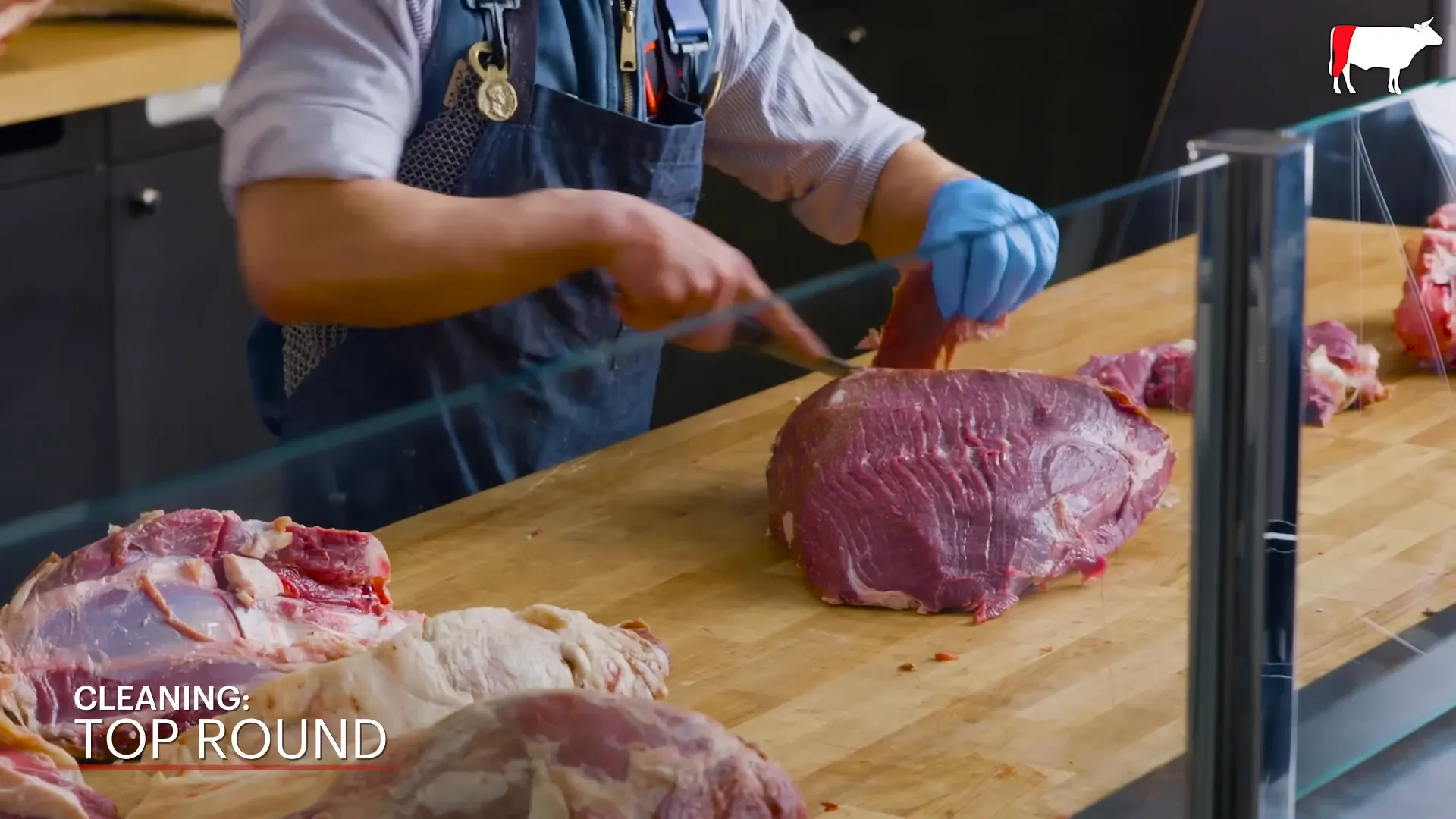
Cleaning these muscles involves removing fascia, connective tissue, and any blood spots to ensure the best texture and presentation. The top round is excellent for tartare and jerky, while the eye round and bottom round make great roast beef when tied into uniform shapes for even cooking.
Breaking Down the Round into Shop-Ready Cuts
- Sirloin tip steaks (also called knuckle): Flavorful, a bit chewier, but delicious.
- Eye round roast: Small, excellent for roast beef.
- Bottom round roast: Larger roast beef, perfect for slicing.
- Top round steaks: Great for jerky, tartare, or roasting.

Exploring the Loin: Tender and Flavorful Cuts
The loin is divided into two main sections: the drop and the short loin. Jason starts by removing the flank, a lean cut that marinates well and grills beautifully. The sirloin flap, or bavette in French, follows—a bib-shaped cut with excellent grain structure and marbling that’s perfect for the grill.
Next, he removes the suet, the internal fat around the kidneys, which is great for rendering into tallow used in cooking, candles, and skincare.
The tenderloin, with its distinctive big head tapering to a thin tail, is carefully deboned from both sides. Jason also pulls out the psoas minor, a prized side muscle known as the channette in French cooking, prized for tenderness.
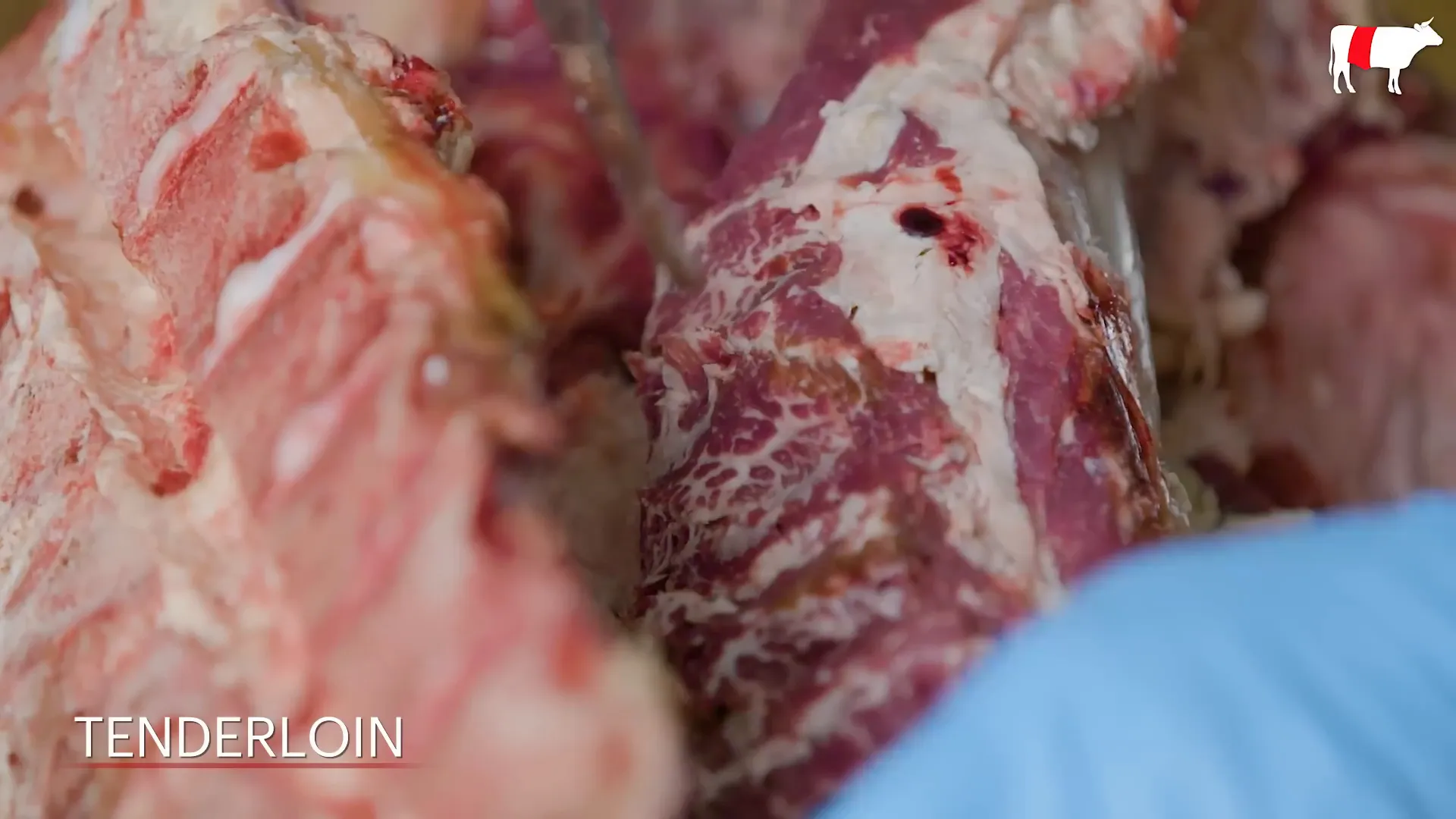
The strip loin is separated to yield New York strip steaks (also called shell steaks when bone-in), and the sirloin bone-in section is dislocated from the loin using leverage and gravity.
Jason highlights the sirloin, a favorite cut, carefully deboning it due to its concave bone structure. The ball tip is trimmed away, and the tri-tip, popular in California and Texas (where it's smoked), is removed. The top sirloin rounds out this section.
Shop-Ready Loin Cuts
- New York strip steaks: Hand-cut through feather bones for perfect portions.
- Tenderloin/filet mignon: The most tender cut, but Jason encourages appreciating texture and flavor from other cuts too.
- Tri-tip: Great for grilling or smoking.
- Sirloin steaks: Flavorful and versatile.
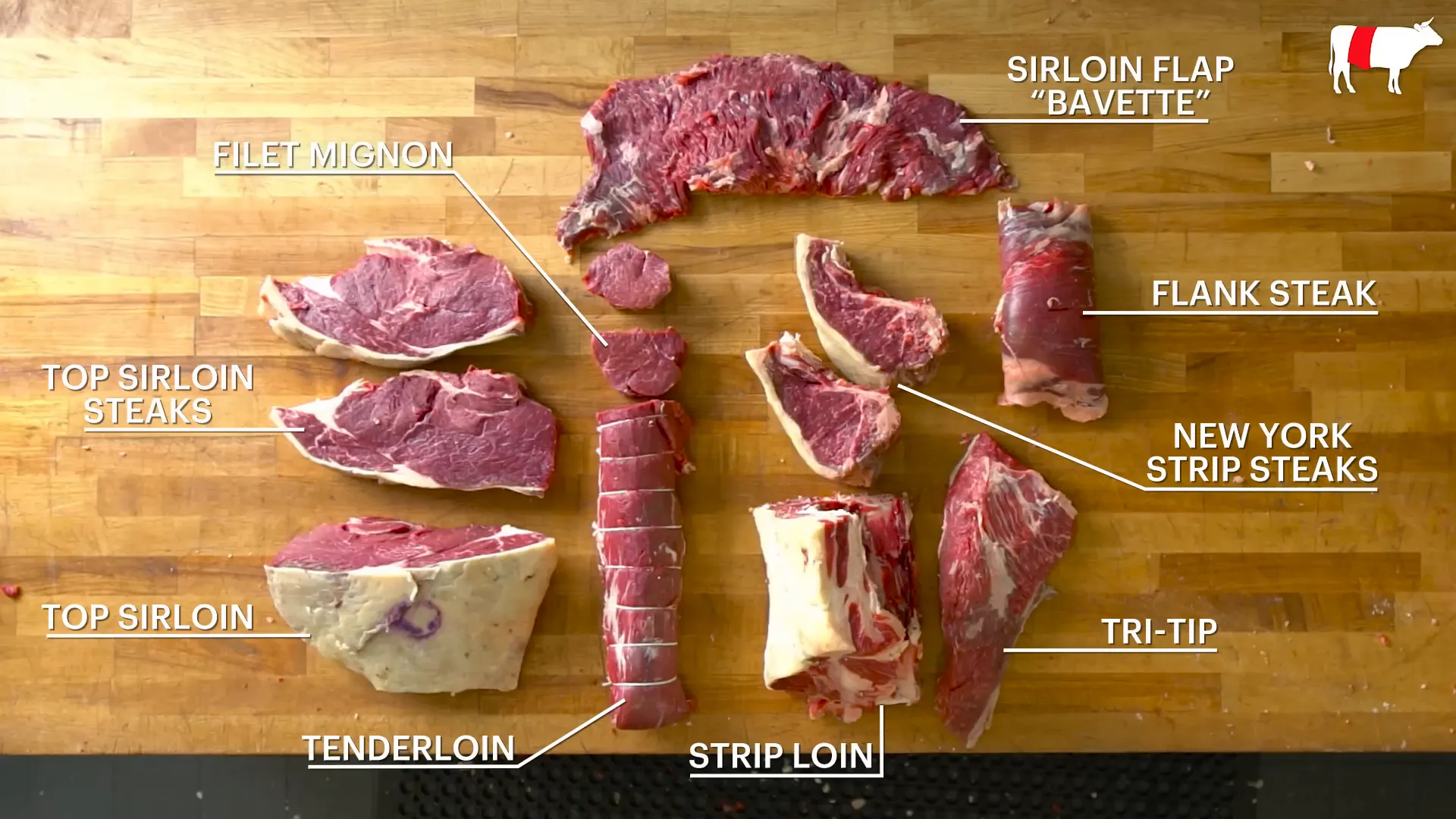
The Rib Section: Rich, Flavorful Steaks and Skirts
The rib primal is iconic, conjuring images of giant racks of ribs. Jason focuses on the skirts first: the outside skirt, darker and richer with a minerally flavor similar to hanger steak, and the inside skirt, which is usually sliced across the grain to enhance tenderness.
He removes tough membranes and cartilage, using simple tools like a handsaw and boning knife, showcasing the elegance of butchery through leverage and gravity.
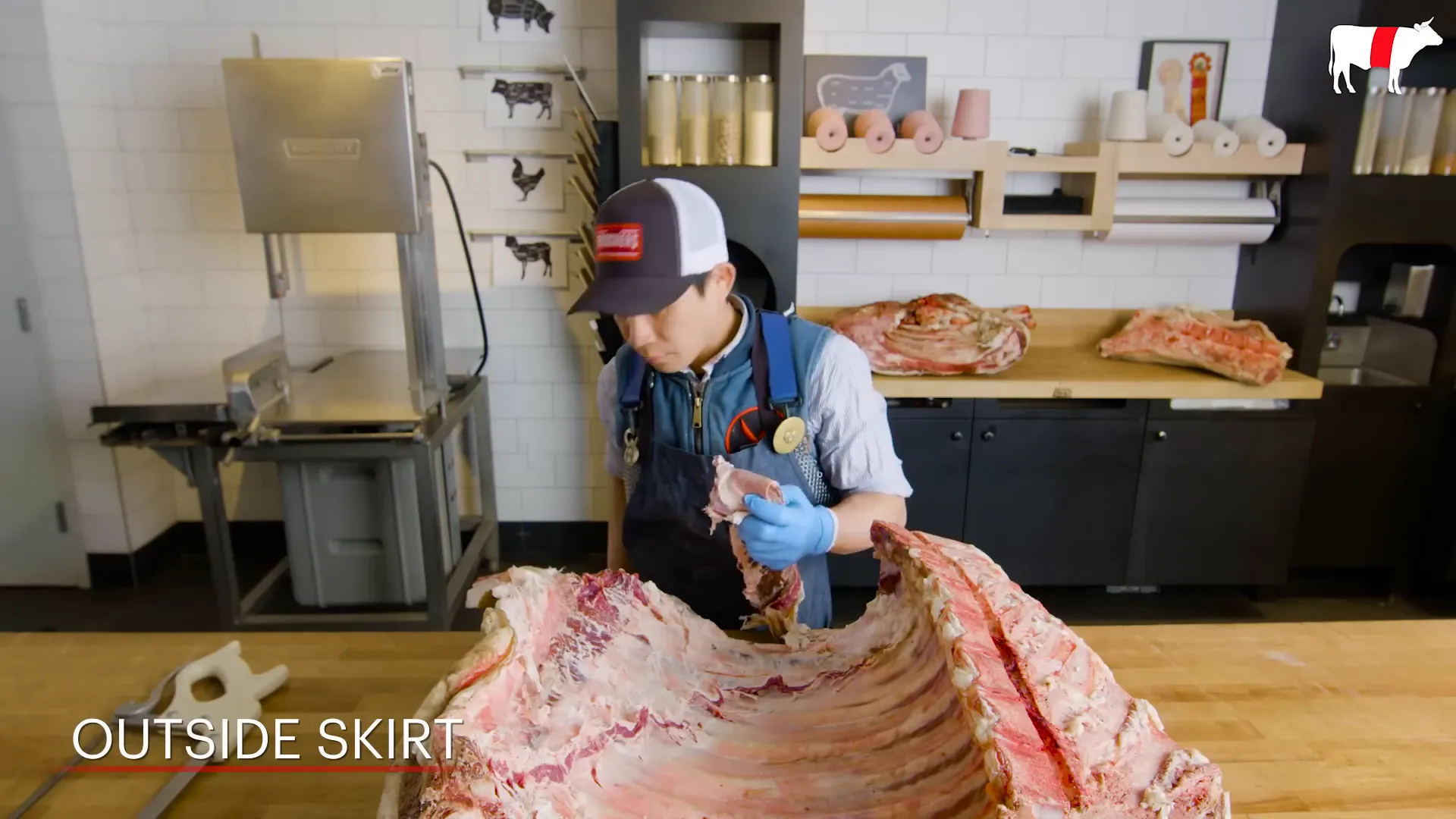
The navel is separated as well, a cut perfect for smoking into beef bacon or braising for dishes like ropa vieja. The rib primal is hand-shined and cut through the spine to remove chine and feather bones, setting the stage for hand-cut ribeye steaks.
Rib Cuts Perfect for Your Grill
- Outside skirt steak: Great for carne asada and Brazilian barbecue.
- Inside skirt steak: Tenderized by slicing across the grain.
- Navel: Suitable for smoking or braising.
- Ribeye steaks: Rich, marbled, and perfect for grilling.

Chuck: A Treasure Trove of Flavor and Texture
For Jason, the chuck is the most interesting cut because it offers a wide variety of textures and flavors. Starting with removing sweetbreads left by the slaughterhouse—tasty little nuggets in their own right—he then saws off the upper shoulder and neck in one piece, giving access to many other components.
Using the edge of the table for leverage, Jason peels away the chuck cap and removes the short rib plate, a meatier section perfect for grilling. The breastbone is sawed off for stock.
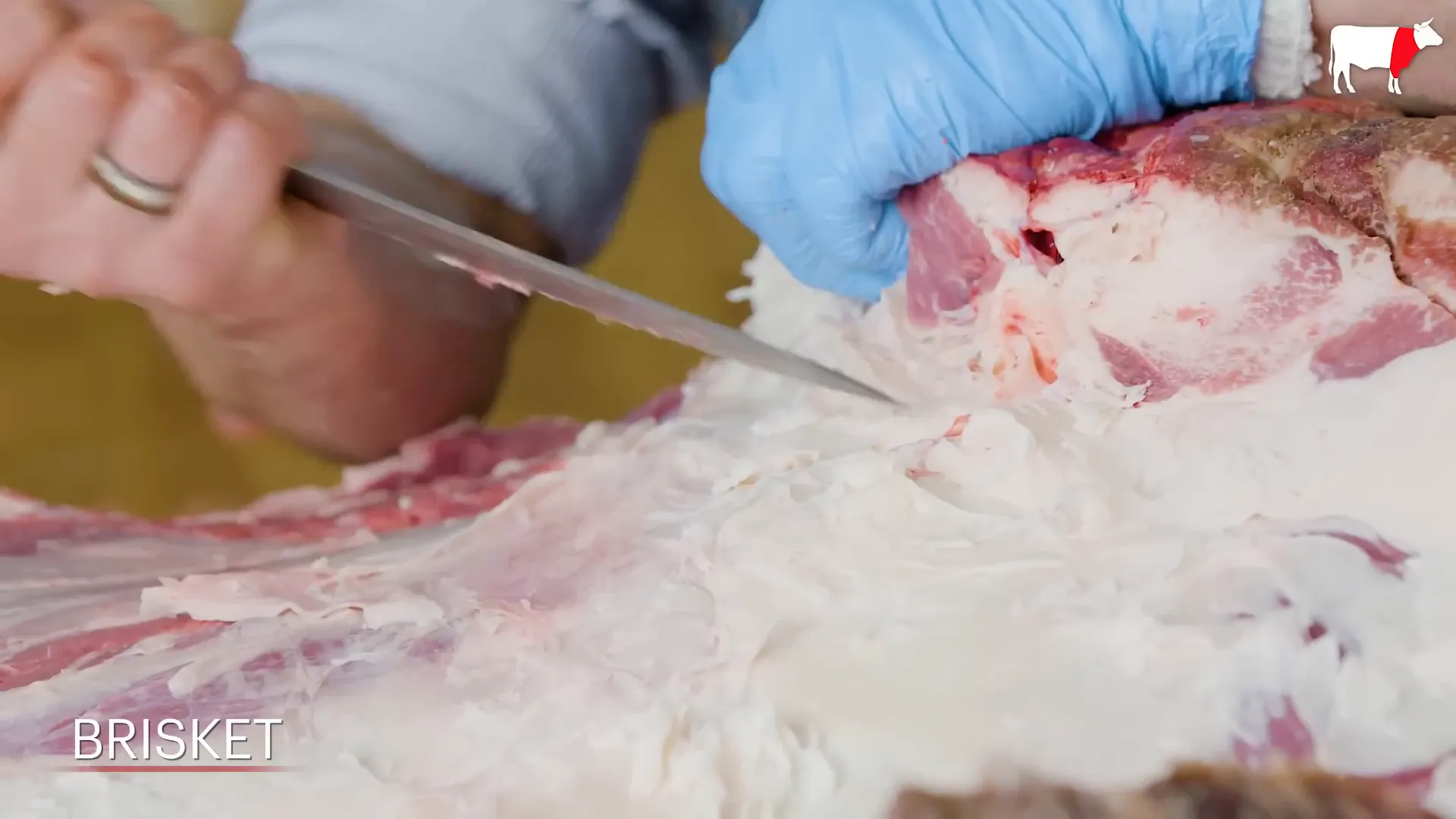
With the brisket accessible, Jason carefully finds the seam near the armpit to separate it cleanly. The brisket is prized for its flavor and is a classic for smoking or slow cooking.
Next, he dislocates the shoulder blade to separate the arm steaks, triceps (clod), and scapula, revealing the teres major—a tender steak weighing about a pound.
Other notable cuts include the under blade, excellent for chicken fried steak, and the shoulder clod, which connects to the flat iron, regarded as the second most tender muscle in the steer. The chuck tender or mock tender is also removed, usually destined for trim or lean stew but can be roasted.
Chuck Cuts and Their Best Uses
- Chuck eye roast and steaks: Flavorful and tender.
- Denver steaks: Well-marbled and perfect for grilling.
- Brisket: Ideal for slow cooking or smoking.
- Flat iron and shoulder clod: Great everyday steaks.
- Chuck tender: Good for lean stews or roasts.
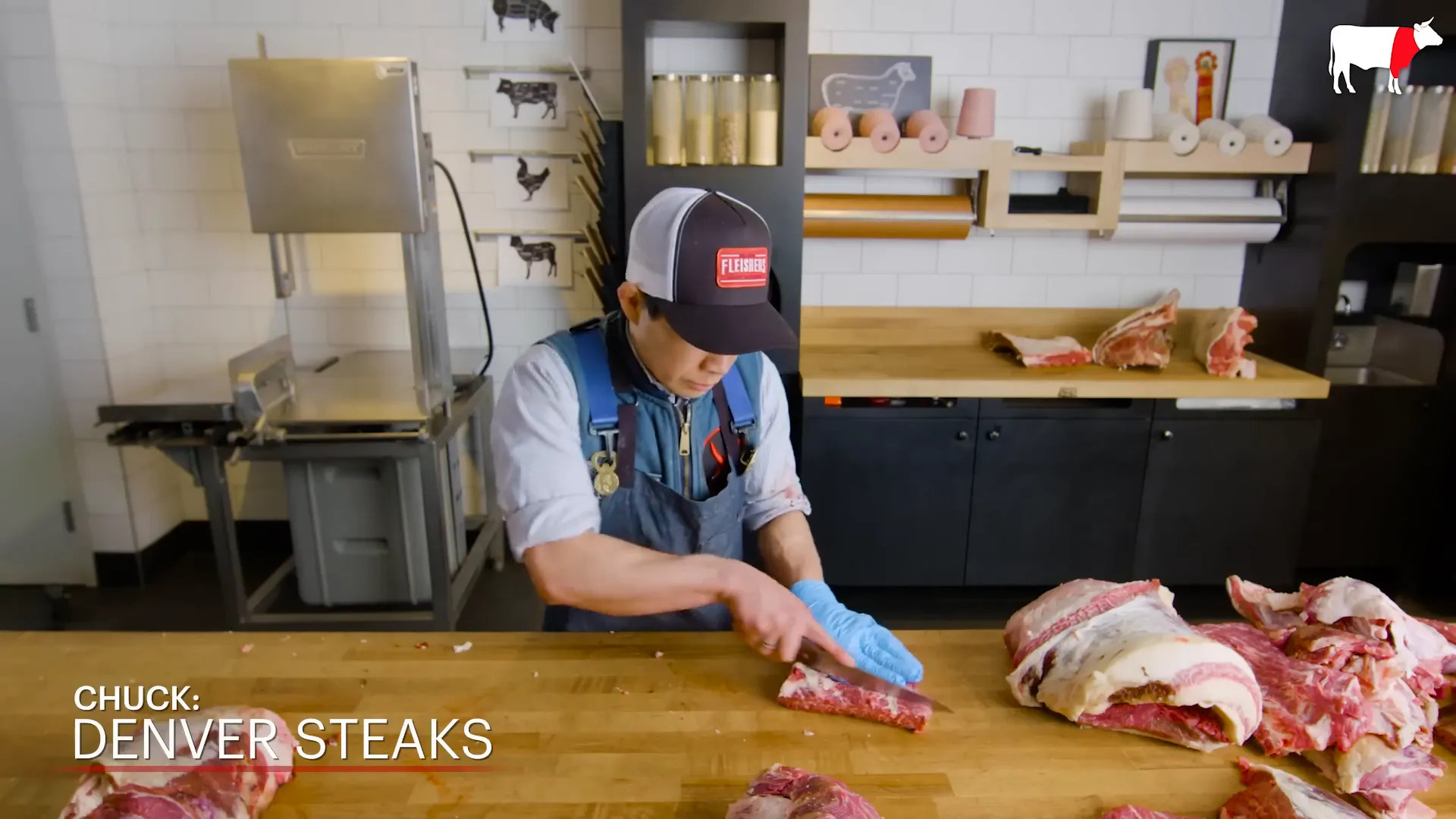
Using the Band Saw: Precision Cuts for Osso Buco and Ribs
The band saw is an indispensable tool in the butcher shop, allowing for precise and efficient bone cuts. Jason uses it to slice osso buco from the shank into about 1¼-inch thick pieces, exposing the marrow perfectly for braising dishes that let the marrow enrich every bite.
He carefully scrapes the meat after cutting to remove bone dust and debris, preserving the meat's color and quality.
The band saw also helps cut the chuck rib plate into thin, grill-ready steaks and the short rib plate into English-cut short ribs, perfect for braising in 2-inch or 4-inch blocks.
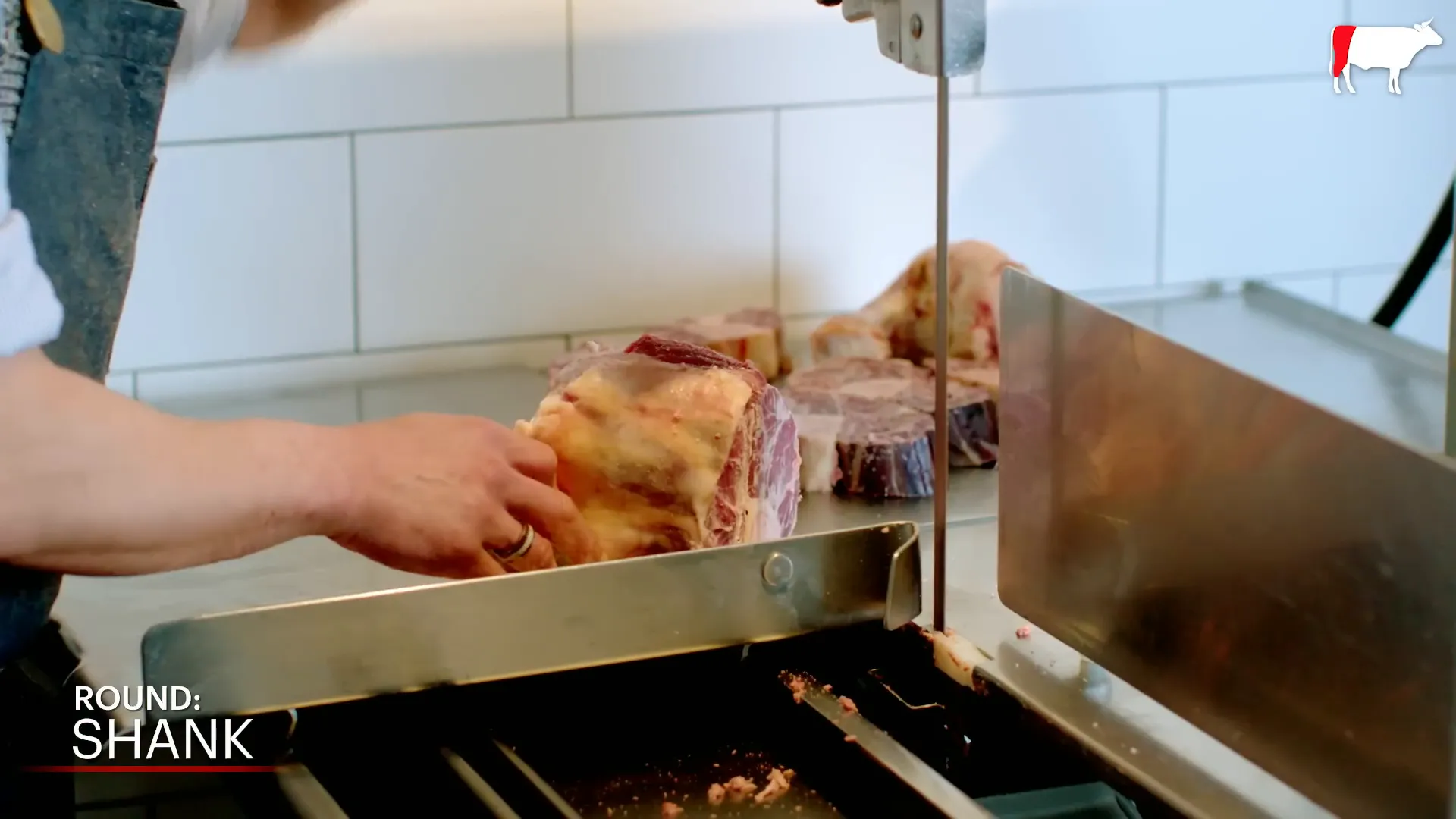
These final cuts represent the full bounty of a half steer, ready to be transformed into delicious meals with the right cooking techniques.
A New Appreciation for Butchery and Beef
Understanding the anatomy of beef and the skill involved in butchery opens a world of possibilities for cooking and recipes. From the lean roasts of the round to the tenderloin’s melt-in-your-mouth texture, the rich ribeyes, and the versatile chuck, each cut has its story and best use.
Whether you're grilling, roasting, braising, or making stew, knowing how to handle and prepare these cuts will elevate your cooking and deepen your appreciation for the craft behind every bite.
Jason Yang’s breakdown from Fleischer's Craft Butchery is a masterclass in butchery that inspires confidence and curiosity in anyone passionate about cooking, recipes, and the joy of Bon Appétit.
This article was created from the video How To Butcher An Entire Cow: Every Cut Of Meat Explained | Bon Appetit with the help of AI.
How to Butcher an Entire Cow: Every Cut of Meat Explained | Cooking, Recipes, Bon Appetit. There are any How to Butcher an Entire Cow: Every Cut of Meat Explained | Cooking, Recipes, Bon Appetit in here.
